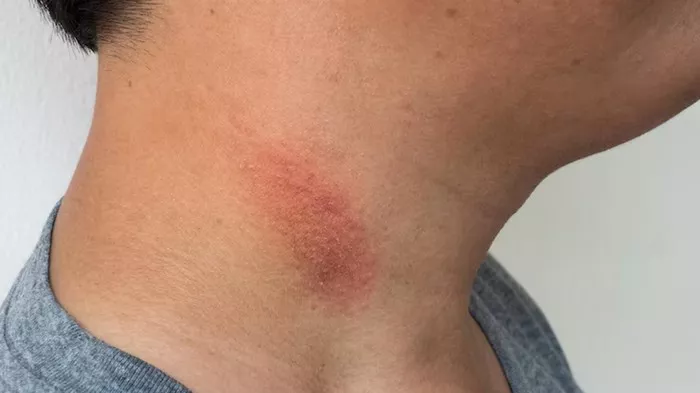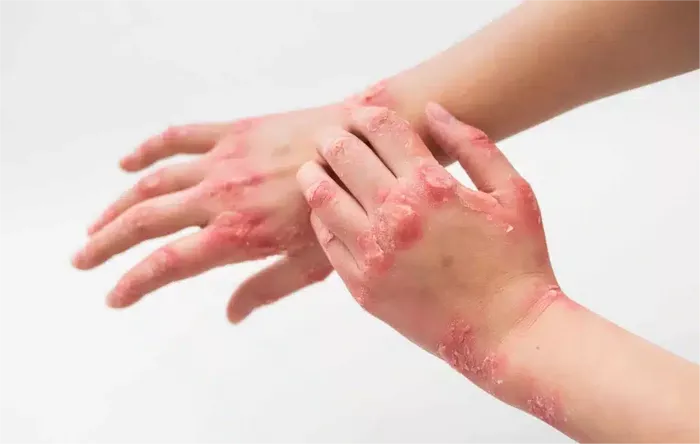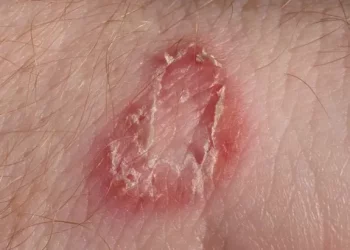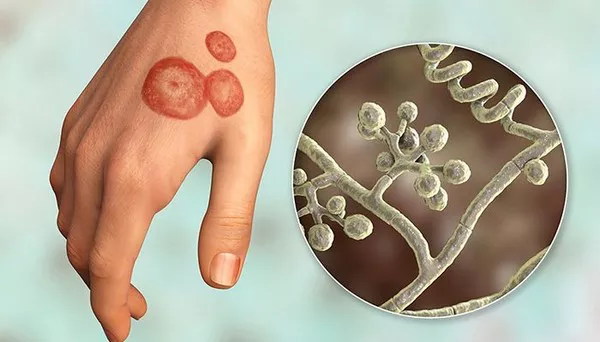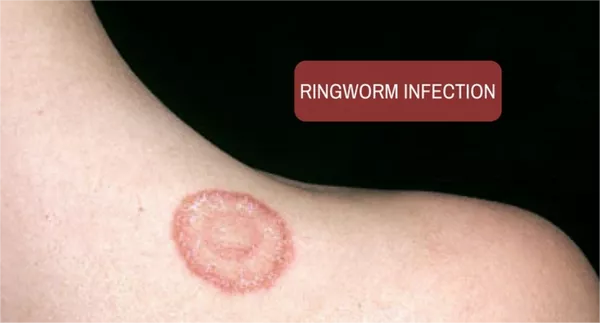Ringworm, despite its name, is not caused by a worm but by a group of fungi known as dermatophytes. These fungi affect the skin, hair, and nails, causing a distinctive ring-shaped rash that is itchy and sometimes painful. Understanding how ringworm is contracted in humans is crucial for both prevention and treatment. This article will explore the various ways in which ringworm is transmitted, the risk factors involved, preventive measures, and the steps to take if you suspect you have contracted this fungal infection.
What is Ringworm?
Ringworm, or tinea, is a common fungal infection that affects the skin, scalp, and nails. The fungi responsible for ringworm thrive in warm, moist environments and are highly contagious. There are several types of ringworm, classified based on the body part they affect:
- Tinea corporis: Affects the body
- Tinea capitis: Affects the scalp
- Tinea pedis: Known as athlete’s foot, affects the feet
- Tinea cruris: Known as jock itch, affects the groin area
- Tinea unguium: Affects the nails
Each type of ringworm can be contracted in different ways, but they all share common transmission methods.
Transmission of Ringworm
Direct Contact with Infected Individuals
One of the most common ways to contract ringworm is through direct skin-to-skin contact with an infected person. This can happen in various settings, including:
- Household Contacts: Family members or roommates living in close quarters can easily transmit the infection to one another.
- Sports and Physical Activities: Athletes, especially those involved in contact sports like wrestling, football, or martial arts, are at higher risk due to frequent skin contact.
- Public Places: Crowded areas such as schools, gyms, and swimming pools can facilitate the spread of ringworm.
Indirect Contact with Contaminated Objects
Ringworm can also be contracted through contact with objects or surfaces that have been contaminated by an infected person. Common sources include:
- Clothing and Towels: Sharing clothes, towels, or bedding with someone who has ringworm can result in transmission.
- Personal Items: Combs, hairbrushes, razors, and other personal grooming items can harbor the fungi.
- Public Facilities: Locker rooms, showers, and gym equipment are potential sources of infection if not properly cleaned and disinfected.
Contact with Infected Animals
Animals, particularly pets like cats and dogs, can carry the fungi responsible for ringworm. Farmers, veterinarians, and pet owners are more likely to contract ringworm from animals. Signs of ringworm in animals include patches of missing fur, scaly skin, and itching. Common ways of contracting ringworm from animals include:
- Petting or Grooming Infected Animals: Direct contact with an infected animal can transmit the fungi.
- Handling Animals’ Bedding or Toys: Contaminated items can also be a source of infection.
Contact with Contaminated Soil
Although less common, ringworm can be contracted through contact with soil that harbors the fungi. This is more likely in rural or agricultural settings where soil is frequently in contact with infected animals.
Risk Factors for Contracting Ringworm
Certain factors can increase the likelihood of contracting ringworm. Understanding these risk factors can help in taking preventive measures:
- Warm and Humid Climates: Fungi thrive in warm, humid environments, making ringworm more common in such regions.
- Sweating: Excessive sweating can create a moist environment conducive to fungal growth.
- Poor Hygiene: Inadequate personal hygiene increases the risk of infection.
- Compromised Immune System: Individuals with weakened immune systems, such as those with HIV/AIDS or those undergoing chemotherapy, are more susceptible to ringworm.
- Age: Children and elderly individuals are at higher risk due to their developing or weakened immune systems.
- Shared Facilities: Frequenting communal spaces like gyms, swimming pools, and locker rooms increases the likelihood of exposure to ringworm.
SEE ALSO: Can Ringworm Come Back After Treatment?
Preventive Measures
Preventing ringworm involves a combination of personal hygiene practices and environmental controls. Here are some effective preventive measures:
Personal Hygiene
- Regular Hand Washing: Washing hands with soap and water regularly helps remove any fungi that may have been picked up from surfaces or direct contact.
- Keeping Skin Dry and Clean: Moisture provides a favorable environment for fungi. Ensure skin, especially in areas prone to sweating, is kept dry.
- Avoid Sharing Personal Items: Do not share clothing, towels, combs, or other personal items with others.
- Properly Disinfecting Personal Items: Regularly clean and disinfect personal grooming items and clothing.
Environmental Controls
- Clean Communal Areas: Ensure that communal areas such as gyms, locker rooms, and swimming pools are regularly cleaned and disinfected.
- Avoid Walking Barefoot: In public showers or locker rooms, wear flip-flops or shower shoes to prevent contact with contaminated surfaces.
- Pet Care: Regularly check pets for signs of ringworm and seek veterinary care if necessary. Maintain good hygiene when handling pets.
- Soil Contact: Use gloves when handling soil, especially in agricultural settings, to minimize the risk of contact with contaminated soil.
Symptoms of Ringworm
Recognizing the symptoms of ringworm early can help in seeking timely treatment and preventing the spread of infection. Common symptoms include:
- Red, Itchy Rash: The rash is usually circular with clearer skin in the center, giving it a ring-like appearance.
- Scaly or Cracked Skin: Affected areas may become scaly, cracked, or blistered.
- Hair Loss: In cases of scalp ringworm, patches of hair loss may occur.
- Thickened or Discolored Nails: Fungal infection of the nails can cause them to become thick, discolored, and brittle.
Treatment of Ringworm
Once ringworm is contracted, it is important to seek treatment promptly to alleviate symptoms and prevent the spread of infection. Treatment options include:
Topical Antifungal Medications
For mild cases, over-the-counter antifungal creams, ointments, or lotions can be effective. Commonly used topical treatments include:
- Clotrimazole
- Miconazole
- Terbinafine
These medications should be applied as directed, usually for two to four weeks, even if symptoms improve earlier, to ensure complete eradication of the fungi.
Oral Antifungal Medications
For more severe cases or infections affecting the scalp or nails, oral antifungal medications may be prescribed. These include:
- Griseofulvin
- Terbinafine
- Itraconazole
Oral medications are typically taken for a longer duration, ranging from several weeks to a few months, depending on the severity and location of the infection.
Home Remedies
While medical treatment is essential, some home remedies may help alleviate symptoms and support recovery. These include:
- Tea Tree Oil: Known for its antifungal properties, tea tree oil can be applied topically to the affected area.
- Coconut Oil: Coconut oil has antifungal and moisturizing properties that can help soothe the skin.
- Apple Cider Vinegar: Diluted apple cider vinegar can be used as a topical treatment due to its antifungal properties.
When to See a Doctor
While ringworm can often be treated with over-the-counter medications, it is important to see a doctor if:
- Symptoms Persist or Worsen: If symptoms do not improve after a few weeks of treatment, seek medical advice.
- Severe Infection: Extensive or severe infections, especially those affecting the scalp or nails, require professional medical treatment.
- Compromised Immune System: Individuals with weakened immune systems should seek medical attention promptly to avoid complications.
Conclusion
Ringworm is a highly contagious fungal infection that can affect various parts of the body. Understanding how ringworm is contracted, recognizing the symptoms, and taking preventive measures are crucial steps in managing and preventing this infection. By maintaining good personal hygiene, being cautious in communal environments, and seeking timely medical treatment, individuals can effectively prevent and treat ringworm, minimizing its impact on their health and well-being.
Related Topics:


